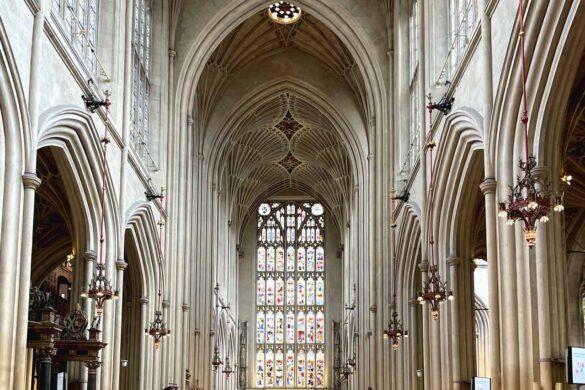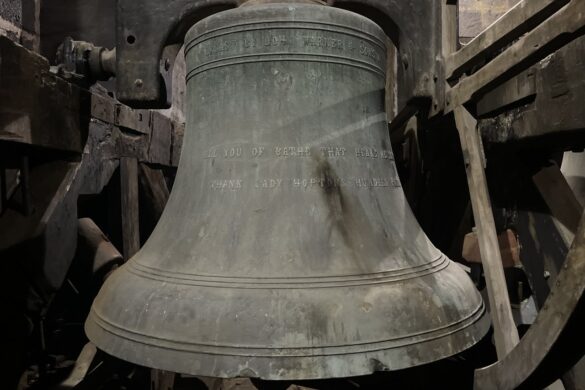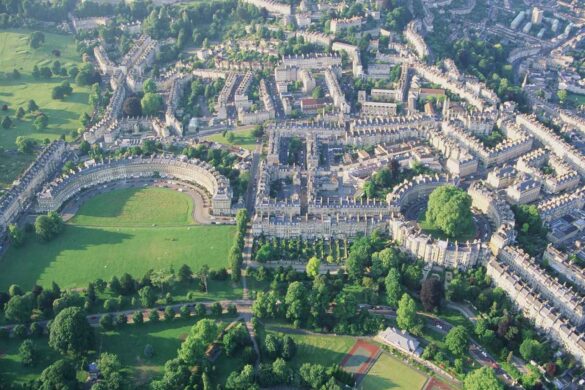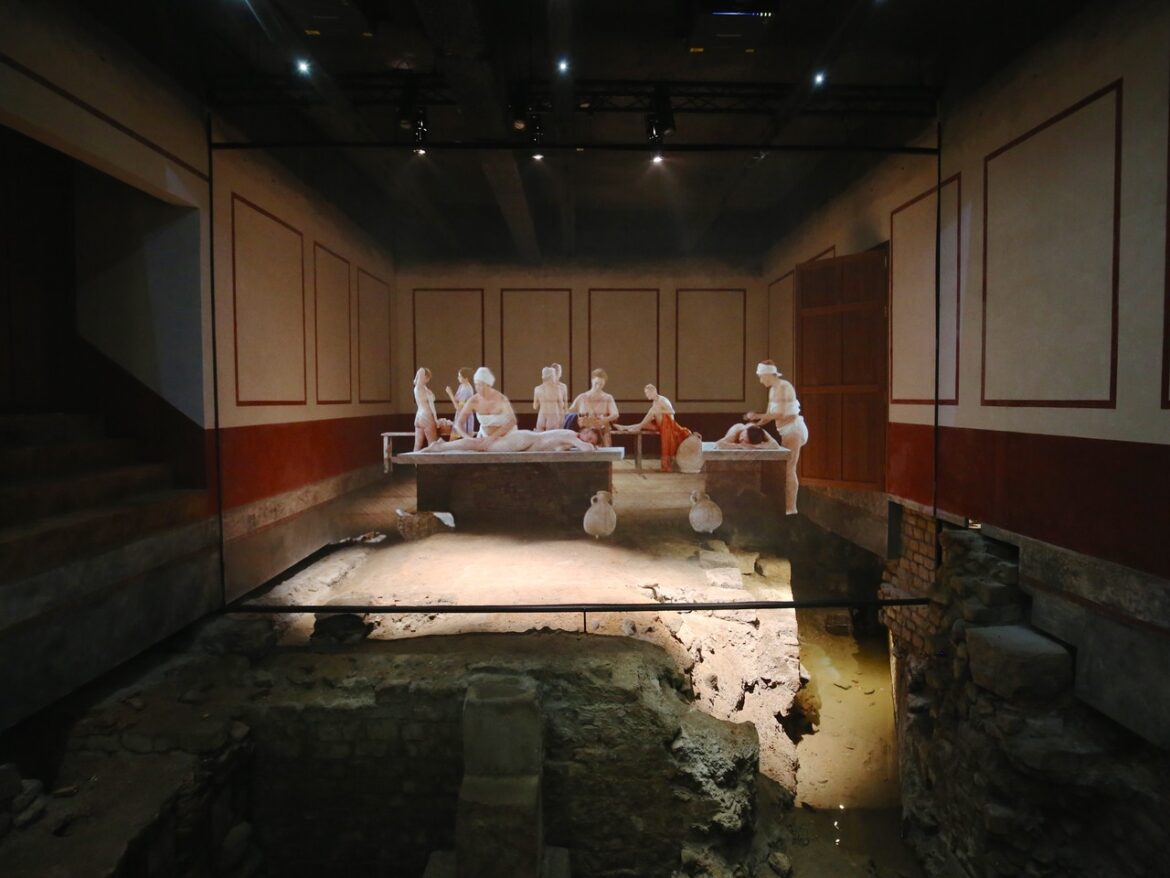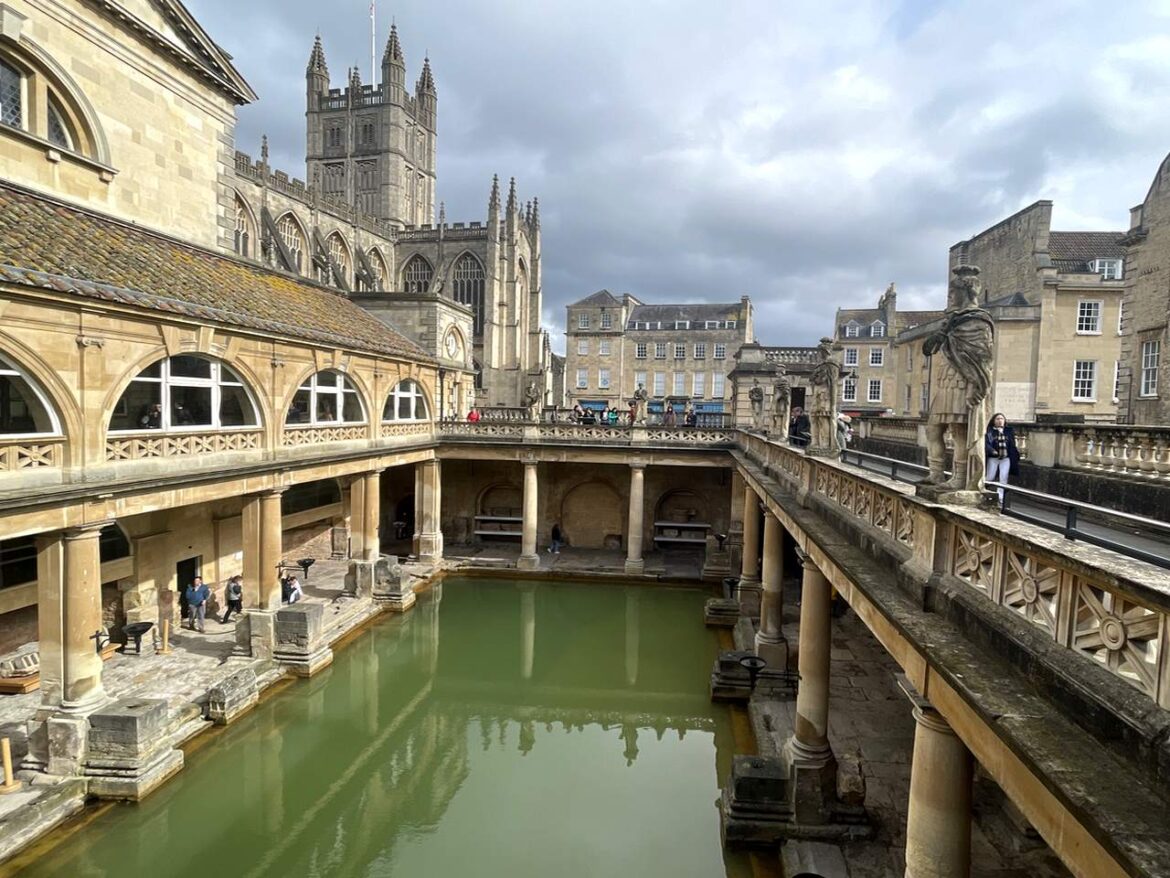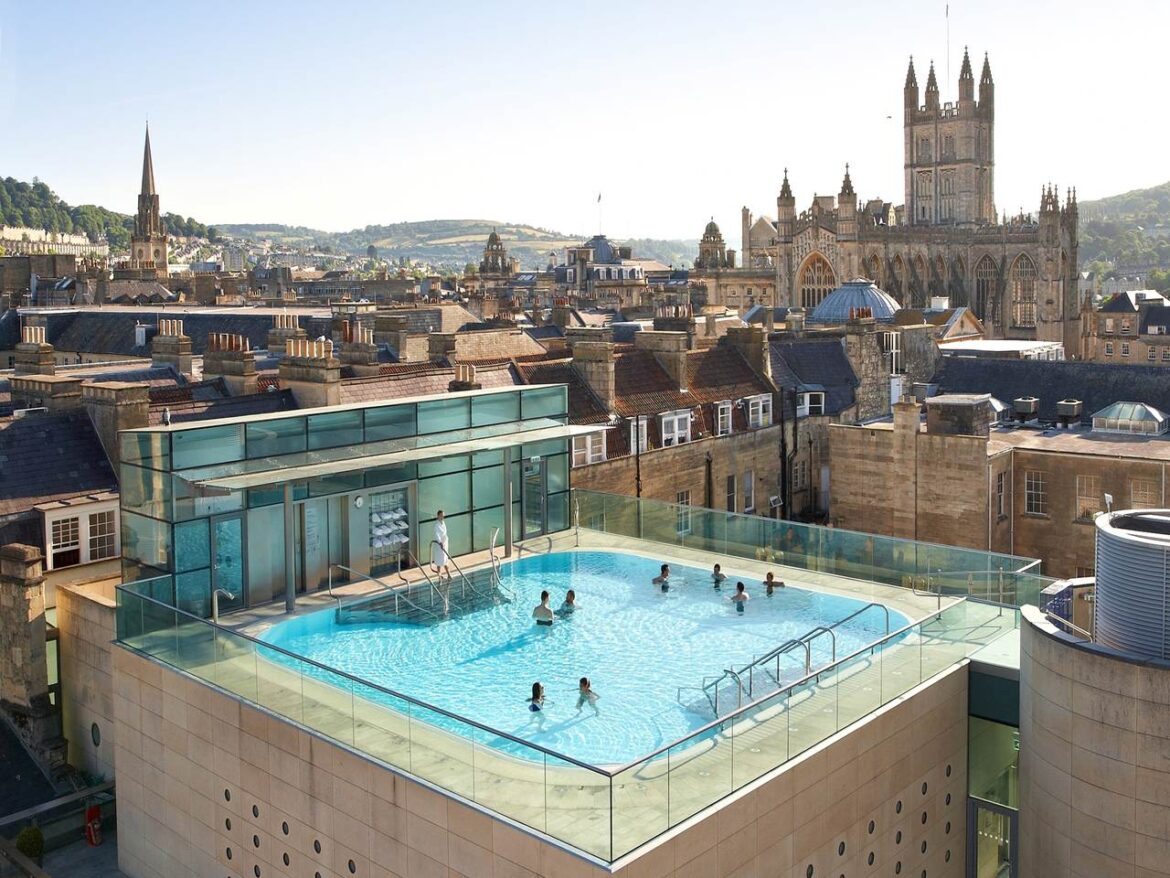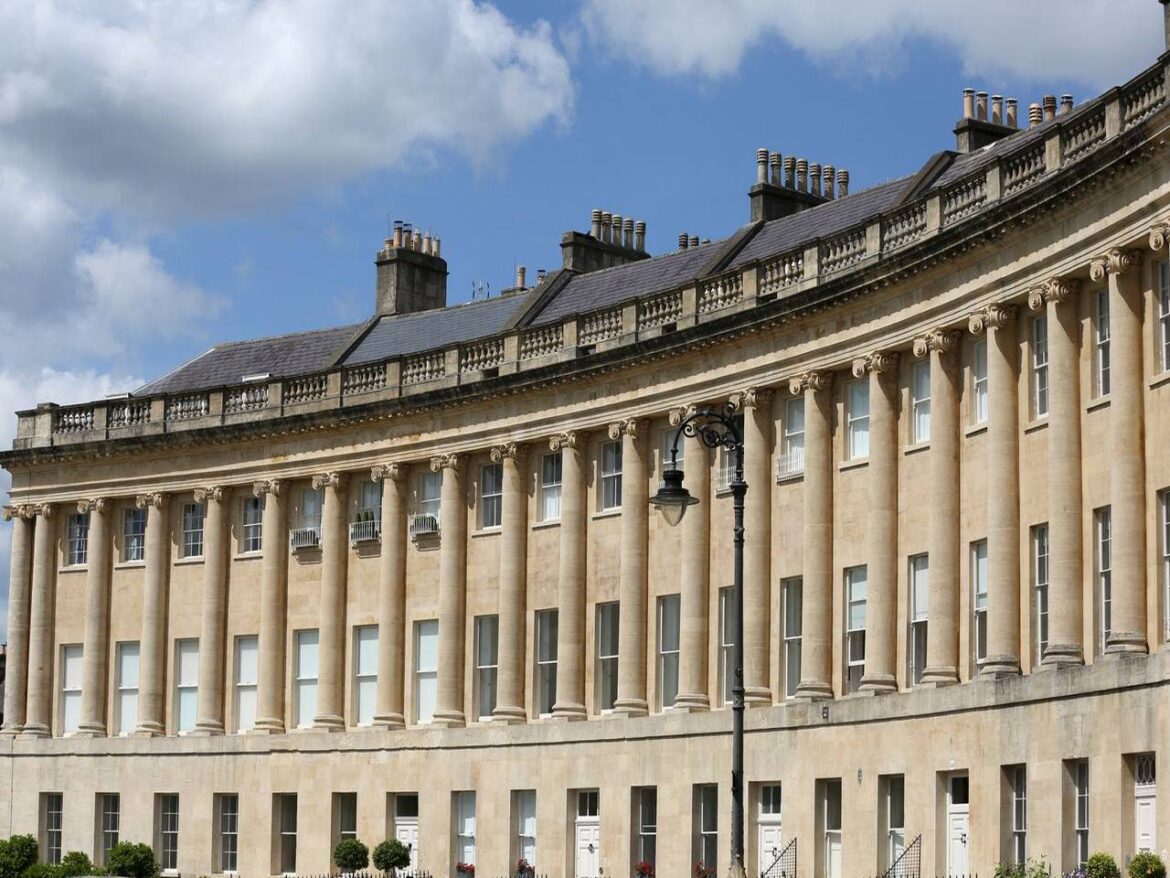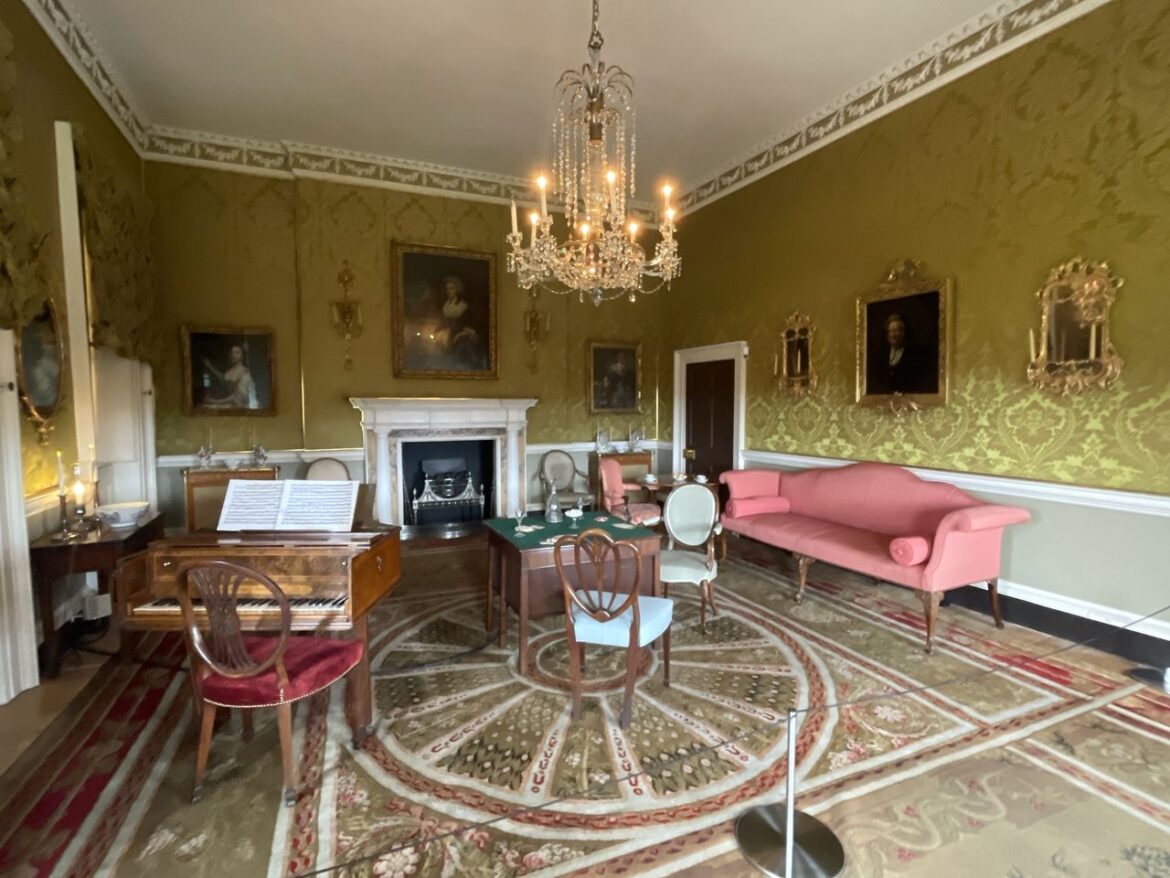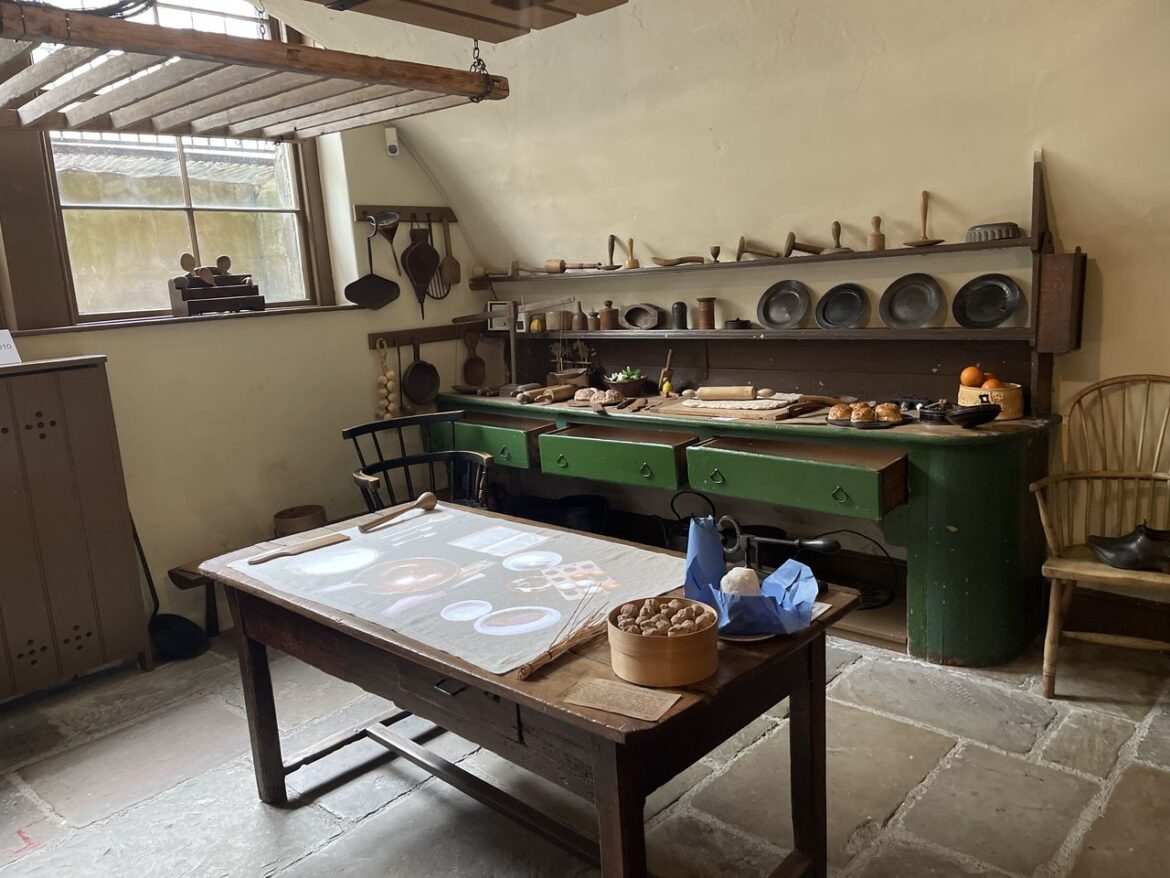When all you want is a short but fascinating break in a beautiful British city, head to the UNESCO World Heritage spa town of Bath in Somerset. You may have already seen much of its honey-hued Palladian architecture on the Netflix series, Bridgerton, so get there now as Bath is particularly gorgeous in the spring or summer sun. However, this guide will help you to explore the best places to visit in Bath, Somerset, England.
The Romans founded Bath around 70AD and the city’s name is inspired by their love of bathing in the city’s spring waters. Then under the reigns of George I, II, III and IV, the Georgians made this medieval city fashionable and desirable. They created an urban landscape of lovely terraces and squares, and spectacular crescents befitting the high-brow lifestyle of Georgian society.
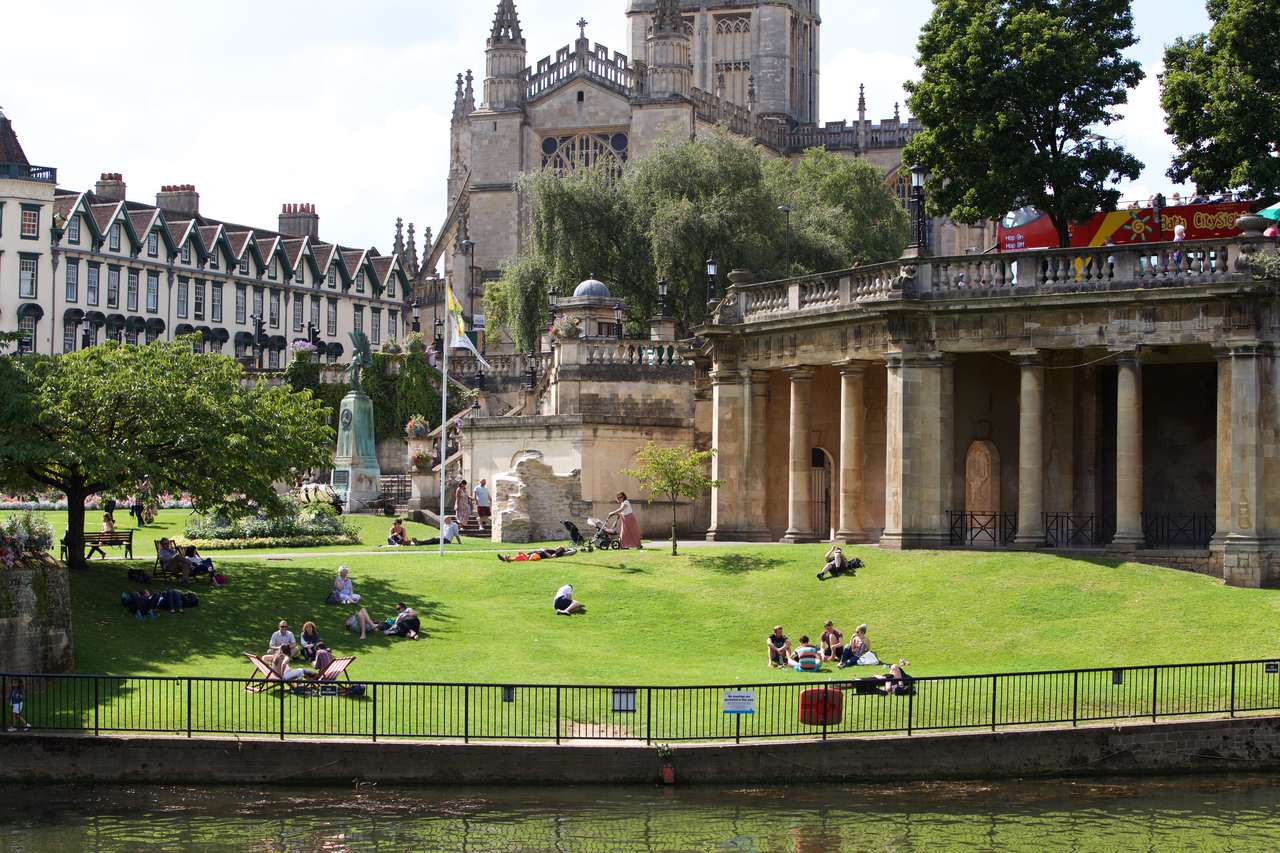
Parade Gardens, Bath
But there’s more. Bath is surrounded by rolling, lush countryside ideal for hikers and cyclists. The Kennet and Avon canals beckon those who want a peaceful river trip. Alternatively, hop aboard one of the boat trips from Pulteney Bridge for a different perspective of the city. Or browse around Parade Gardens, ideal for a chilled-out picnic.
Literary great Jane Austen loved Bath and featured the city in her books Persuasion’ and ‘Northanger Abbey. She lived at 4 Sydney Place now a self-catering boutique hotel. The author would sometimes have breakfast at the Holburne Museum opposite, which has a great café and some interesting exhibitions.
Mary Shelley wrote Frankenstein while a teenager in Bath – and there’s a spooky museum dedicated to Frankenstein.
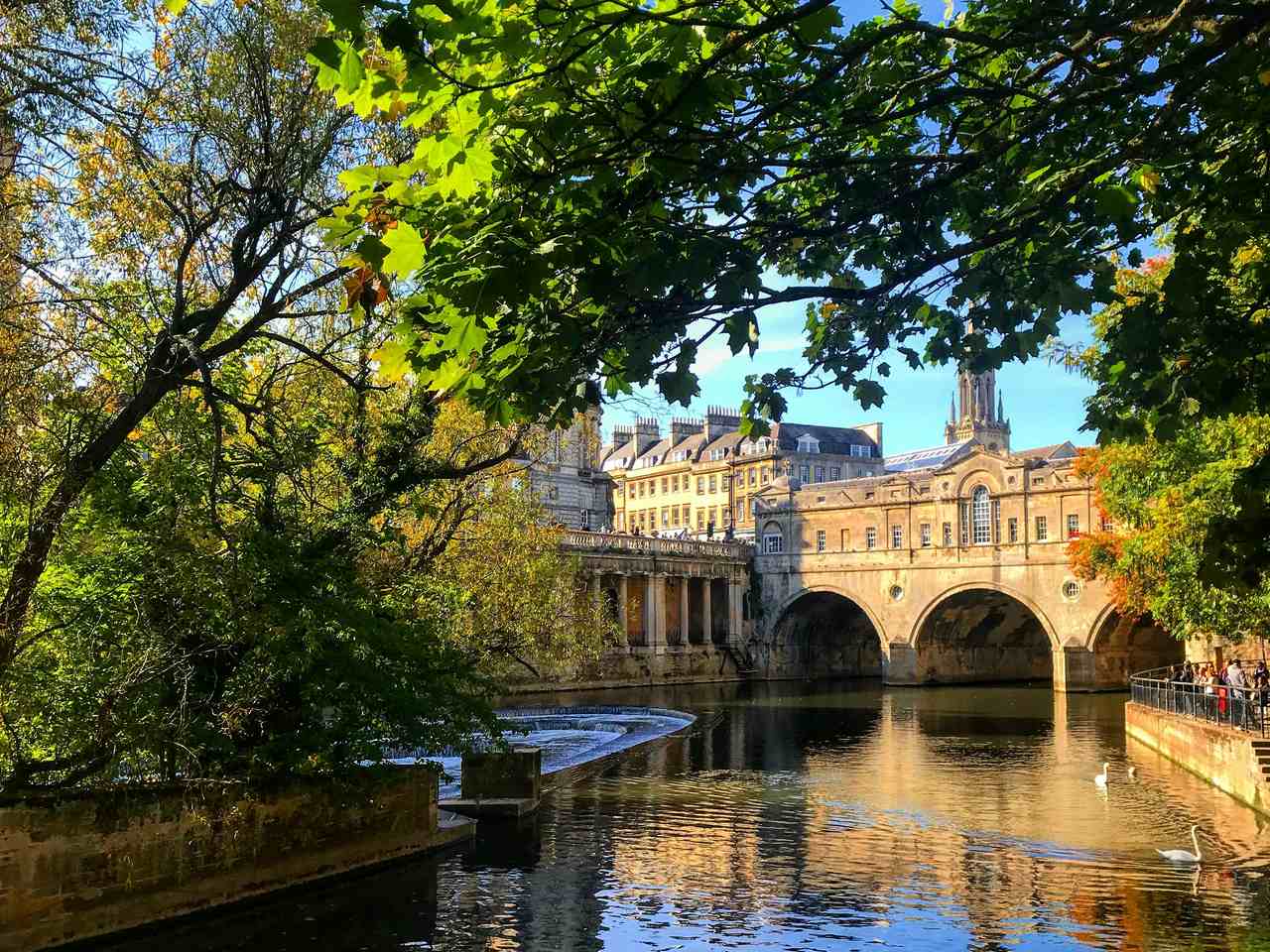
Pulteney Bridge, Bath
It is quite lovely investigating Bath on foot, walking along the River Avon, pottering around the Pulteney Bridge and its shops that stretch over the river, and admiring the curvey roads, quaint museums and galleries that sit invitingly on cobbled streets, old-style sweet shops, independent markets and cosy cafés.
Along the way, be sure to take in these fascinating sites:
Bath Abbey
The vast awe-inspiring medieval Abbey is the largest structure in Bath. Construction started in 1499 and is England’s last great medieval church. It was dissolved in 1539 and now serves as a parish church.
The fanned vaulted ceiling, the various memorials and the glorious stained glass windows depicting religious stories deserve a moment of peaceful contemplation. Then take the tour.
It’s a full-on 45-minute tour to see the Abbey from toe to top climbing 212 steps stopping at the Bishops’ balcony, the ringing room, behind the clockface, the bell chamber – where you can ring a bell – and onto the roof for a 360-degree view over the city and beyond.
The Roman Baths
The Romans founded Bath in the first century AD. They called it “Aquae Sulis,” which means “the waters of Sulis” in Latin. They loved the natural hot springs using the water for their bathtime entertainment. I visited the Roman Baths and temple complex, a few yards from the Abbey, is where Sulis Minerva, goddess of the hot springs, resides.
Every day 1,170,000 litres of steaming spring water still fills the bathing site. The museum shows visual reconstructions of Romans using the baths and though not possible to take a dip in it, you can wallow in the modern thermal waters at Thermae Bath Spa 200 yards away, in probably the same way Romans did.
1 Royal Crescent museum
The Royal Crescent, an arching sweep of 30 houses, is the most famous example of Georgian architecture. The house at 1 Royal Crescent featured in the Netflix Bridgertons series as the exterior for the Featherington family home. In reality, the house is a museum open to the public. Rooms feature historic furniture that offers insights into daily life. The drawing room typically has a piano and card table, music and gambling were the main pastimes of the era, while servants lived in less ornate surroundings. Audio-visual technology means you can hear the fascinating and contrasting conversations had by the owners and their servants.
Assembly Rooms
The Assembly rooms offeer a snapshot of Georgian life and etiquette. Built by John Wood the Younger (also responsible for Royal Crescent) this Grade I listed building was described as ‘the most noble and elegant of any in the kingdom’.
It has four rooms; Great Octagon, Tea Room, Ball Room and Card Room and this is where Georgian society would network, discuss politics and even gamble. The highlight was the balls. Locals would arrive by Sedan Chair carried by servants or by horse and carriage at 6pm to spend the evening dancing or gambling under expensive and ornate English crystal chandeliers. When Bath was bombed by the Germans in 1942 in the Bath Blitz one bright spark took them down and they were saved.
On the walls, are several mirrors essential for men and women to check their huge wigs and makeup are intact and indeed surreptitiously looking around to see who else is in the room.
Incidentally, the Assembly Rooms appeared in all of Jane Austin’s books.
Where to eat in Bath
Bath is full of eateries and you could stroll around until you find one that takes your fancy. Perhaps head for The Walcot a popular all-in-one destination arranged over two floors with an impressive bar and a restaurant that caters for breakfast lunch, and dinner, from a formal three courses or a night of live music and dancing.
The most famous place to have lunch is probably Pump Room looking superb with white walls surrounding a huge space. They have a resident classical ensemble who play music while you eat.
Sally Lunn on the famous North Street passage, is probably the most historic. A sign says it has been an eating house since 1680 in a rickety building that has been there since 1482. Their narrow, creaky stairs lead to a small dining room where I enjoyed their famous Bath Bunn. This is a French-style brioche, you can top with something sweet or savoury. They also have a bakery museum which you can visit.
The Olive Tree, offers superb food – especially the tasting menu – and is the only Michelin-starred restaurant in the city. Deliciously creative dishes by Chef Chris Cleghorn and wines would be a good combo.
The Elder restaurant, attached to the Indigo Hotel specialises in game such as Fallow Dear and is popular as a carnivore’s haven.
Where to stay in Bath
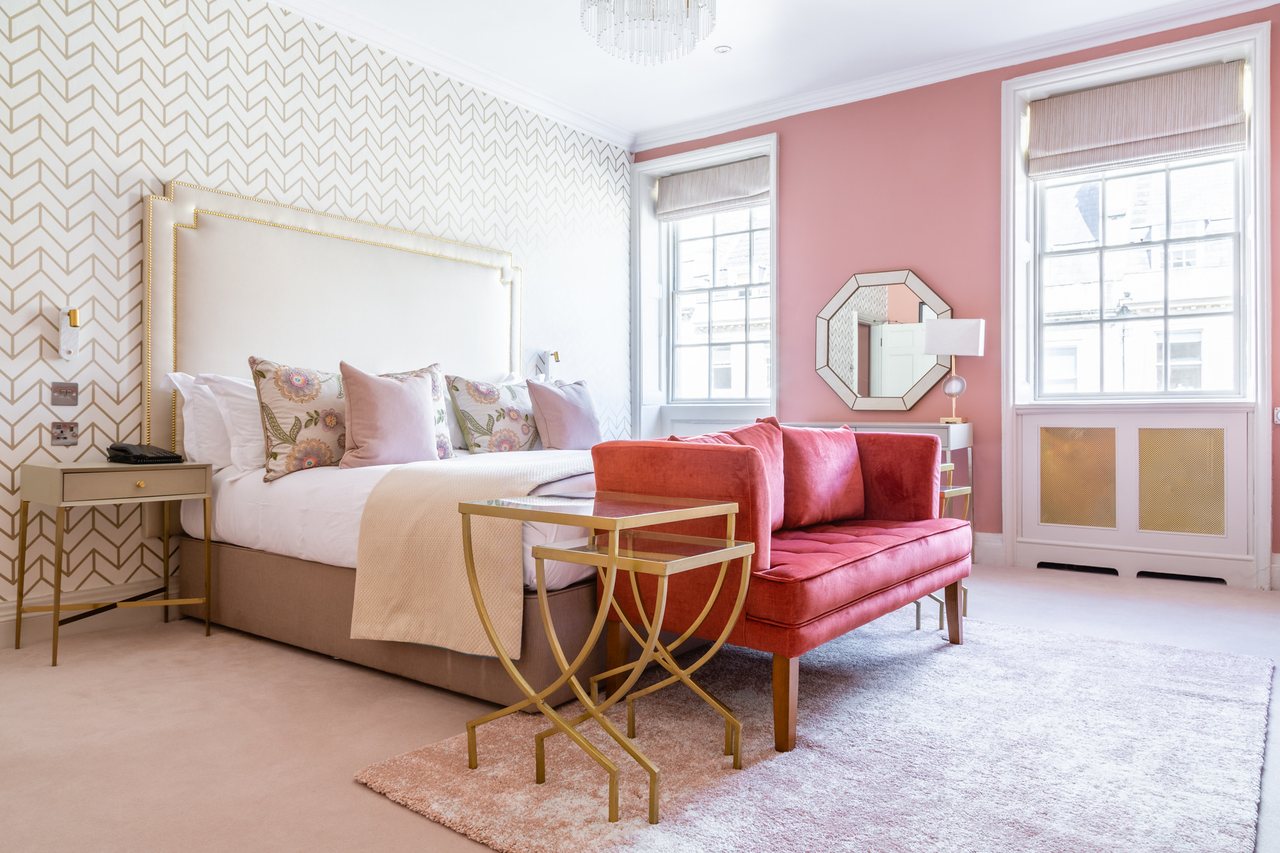
Bedroom in Queensberry Hotel, Bath
There are plenty of fabulous options in Bath. Here are four with great locations that we tried and tested: Francis Hotel Bath on Queens Square, DoubleTree Hilton on Walcot Street, Hotel Indigo on South Parade and Queensberry Hotel on Russel Street.

